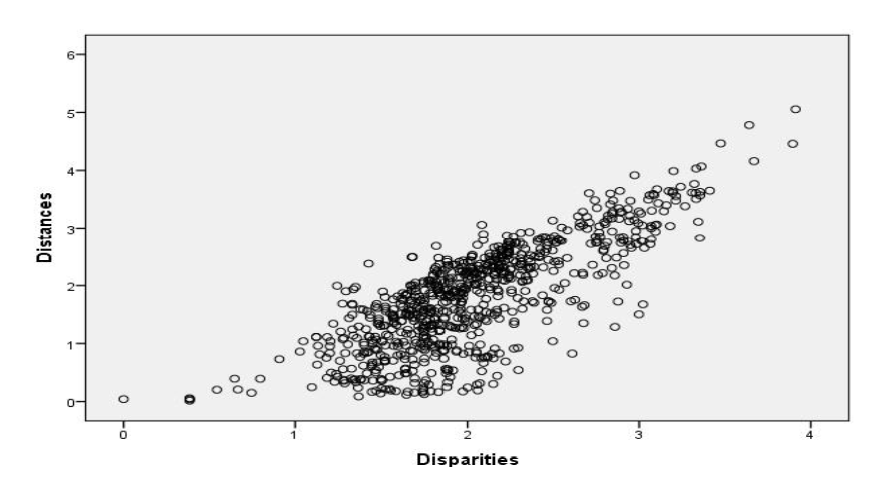Tourism competitiveness on the utilization zone of National Park in Indonesia

Indonesia has various natural tourist attractions existed in the utilization zones of National Parks, scattered in regencies and cities within the archipelago. The utilization zone has a supportive environmental condition and very potential for the development of natural tourism, especially ecotourism. This utilization zone has endowment and added value in the form of attractions of Indonesia's unique ecosystem diversity. The utilization zone of Natural Park requires supporting elements in the form of tourism competitiveness in regencies and cities to make them more accessible to tourists, mostly foreign tourists, and also make it easier for tourists to meet their needs while traveling. This study aimed to analyze the effectiveness of tourism competitiveness factors in 54 areas of the utilization zone of National Park.This study design used 20 factors of tourism competitiveness.The data were analyzed using the cluster method and multidimensional scale, as well as the Importance Performance Analysis (IPA)approach. This study found three regional clusters based on the characteristics of the potential for tourism competitiveness, namely the outside regional cluster of Java and Bali Islands, cluster of Java Island, and cluster of Bali region. Based on the effectiveness of potential for competitiveness, each cluster can be classified as a priority scale for building and developing of tourism competitiveness. Therefore, it is necessary to propose to the central government, local governments, National Park management, and other related parties to innovate policies innovations through the Destination Management Organization(DMO)governance mechanism in an effort to optimize tourism competitiveness factors in their regions, so that ecotourism in their regions is competitive and sustainable
Albalate, D., & Bel, G. (2010). Tourism and urban public transport: Holding demand pressure under supply constraints. Tourism Management, 31(3), 425–433.
Arie, L. (2015). Pengelolaan Taman Nasional dianggap belum optimal. Republika. diakses tanggal 9 September 2020.
Arthur, D., & Vassilvitskii, S. (2006). How slow is the k-means method? Proceedings of the Twenty-Second Annual Symposium on Computational Geometry, 144–153.
Calderwood, L., & Soshkin, M. (2019). The Travel & Tourism Competitiveness Report 2019. World Economic Forum.
Cho, V. (2003). A comparison of three different approaches to tourist arrival forecasting. Tourism Management, 24(3), 323–330.
Cizmar, S., & Weber, S. (1999). Marketing effectiveness of the hotel industry in Croatia. International Journal of Hospitality Management, 19(3), 227–240.
Cizmar, S., & Weber, S. (2000). Marketing effectiveness of the hotel industry in Croatia. International Journal of Hospitality Management, 19(3), 227–240.
Dupeyras, A., & Maccallum, N. (2013). Indicators for Measuring Competitiveness in Tourism A Guidance Document. In OECD Tourism Papers, 2013/02.
Eddyono, F. (2020). Model optimasi penerapan elemen ekowisata dan daya saing destinasi berbasis inovasi mahadata pada Taman Nasional di Indonesia. (Doctoral dissertation, IPB University).
Eddyono, F., Darusman, D., Sumarwan, U., &Sunarminto, T. (2020a). Correlation of tourism competitiveness towards tourist visit and non-tax revenue in Nasional Parks in Indonesia. Journal of Critical Reviews, 7(16), 1155–1171.
Eddyono, F., Darusman, D., Sumarwan, U., & Sunarminto, T. (2020b). The tourism competitiveness of districts and cities possesing a National Park in Indonesia. Journal of Scientific Research and Reports, 26(3),25–41.
Hair, J. F., Anderson, R. E., Babin, B. J., & Black, W. C. (2010). Multivariate Data Analysis: A Global Perspective. Pearson.
Judisseno, R. K. (2017). Aktivitas dan Kompleksitas Kepariwisataan. Jakarta: PT. Gramedia Pustaka Utama.
KLHK. (2006). Peraturan Menteri Kehutuanan Nomor P.56/Menhut-II/2006 tentang Pedoman Zonasi Taman Nasional.
KLHK. (2017). Pariwisata Alam 54 Taman Nasional Indonesia: Jelajah KeindahanPanorama dan Keunikan Fenomena Alam Indonesia. Jakarta: Direktorat Pemanfaatan Jasa Lingkungan Hutan Konservasi, Kementerian Lingkungan Hidup dan Kehutanan Republik Indonesia.
Kruskal, J. B., & Wish, M. (1978).Multidimensional scaling. CA: SAGE Publications, Inc.
Malhotra, N. K. (2010). Marketing Research: An Applied Orientation,6th Edition. Pearson Education.
Malhotra, N. K., (2019). Marketing Research: an applied Orientation,7th Edition. New York:Pearson.
Martilla, J. A., & James, J. C. (1977). Importance-performance analysis. Journal of Marketing, 41(1), 77–79.
Martınez-Celdrán, E., Fernández-Planas, A. M., & Carrera-Sabaté, J. (2003). CastilianSpanish. Journal of the International Phonetic Association, 33(2), 255-259.
Perpustakaan KLHK. (2003). Keanekaragaman hayati untuk keberlanjutan kehidupan manusia. Ministry of Environment and Forestry Republic of Indonesia.
Ritchie, J. R. B., & Crouch, G. I. (2003). The competitive destination: A sustainable tourism perspective. Cabi.
Sulistyadi, Y., Eddyono,F., & Entas, D. (2020). The importance of sustainable tourism governance at the natural area Pantai Carita. South Asian Journal of Social Studies and Economics, 5(4), 1–9.
Sulistyadi, Y., Eddyono, F., & Hasibuan, B. (2017). Pariwisata Berkelanjutan: Pengelolaan Destinasi Wisata Berbasis Masyarakat. Bandar Lampung: AURA CV. Anugrah Utama Raharja.
Supriyanto, B., & Sari, L. (2014). EkowisataTaman Nasional di Indonesia, dalamEkowisata dan Pengembangan Pariwisata Berkelanjutan di Indonesia Potensi, Pembelajaran, dan Kesuksesan. PT Gramedia.
Taylor, T., & Ortiz, R. A. (2009). Impacts of climate change on domestic tourism in the UK: A panel data estimation. Tourism Economics, 15(4), 803–812.
UNWTO. (2020). International Tourism Highlights 2019 Edition.
Van der Merwe, P., & Saayman, M. (2008). Travel motivations of tourists visiting Kruger National Park. Koedoe, 50(1), 154–159.
WTO. (2004). Indicators of Sustainable Development for Tourism Destinations. World Tourism Organization (WTO).
WTTC. (2002). Industry as a partner for sustainable development: Tourism. Report prepared by World Travel & Tourism Council International Federation.
Zed, M. (2004). Metode Penelitian Kepustakaan. Jakarta:Yayasan Obor Indonesia.

